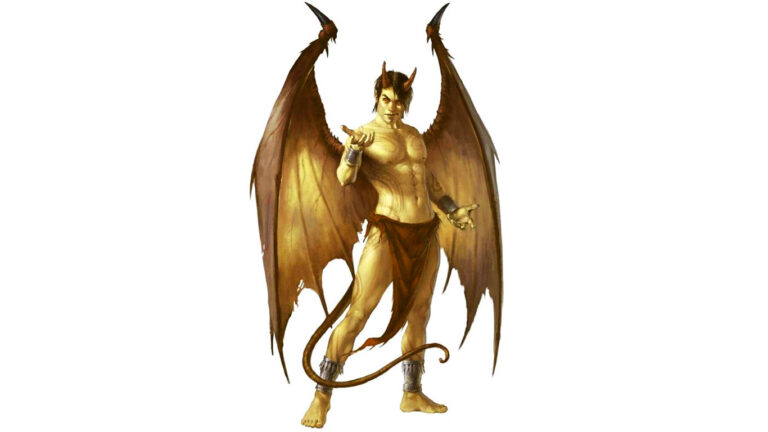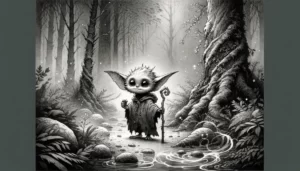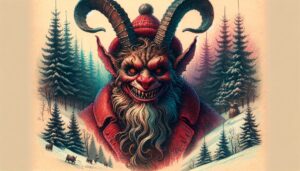Table of Contents
Incubus, mythological or folkloric male demons or supernatural entities, often seduce and sexually exploit humans, particularly women, while they sleep. The corresponding female counterpart is a succubus. Various cultures feature the concept of incubi, and folklore has incorporated it for centuries.
In medieval European folklore, people believed that incubi visited women in their sleep, engaging in sexual activity and sometimes impregnating them. They thought the offspring of such unions were supernatural in nature.
Appearance
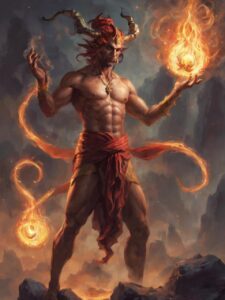
Entities with seductive or malevolent characteristics, such as incubi, appear in the folklore and mythology of various cultures. Here are a few examples of how different traditions describe these beings. In medieval European folklore, people often describe an incubus as a male demon who lies upon women as they sleep, engaging in sexual activity. They sometimes depict it as a handsome, seductive figure.
Incubus Symbols
The concept of the incubus doesn’t have a universal symbol in the way some mythological or religious figures do. In many cultures, representations of demons or supernatural entities are often based on artistic interpretations or symbolic imagery rather than a standardized symbol.
If there are specific symbols associated with the incubus in certain occult or modern traditions, those would be more recent additions and not part of the traditional folklore. In many cases, depictions of incubi in art or literature might include typical demonic symbols such as horns, wings, or other features associated with malevolent entities.
Powers
Supernatural beings, incubi possess the ability to engage in sexual activity with sleeping individuals, typically targeting women. Common features and powers associated with incubi:
Seduction: Incubi entice and seduce their victims through charm and attractiveness.
Shape-shifting: In some traditions, incubi can change their appearance, adopting a form that appeals to their target.
Incubi are linked to nighttime activities, particularly nocturnal visits to sleeping individuals.
Some stories propose that incubi can manipulate dreams, creating vivid and often erotic experiences in the minds of their victims.
Certain traditions depict incubi as powerful entities with abilities surpassing those of humans, including strength and agility.
Mind Control: Incubi may possess the power to control the thoughts or actions of their victims, especially in the context of seduction.
Feeding on Life Force: In some interpretations, incubi are believed to feed on the life force or energy of their victims through intimate encounters.
Behavior
Generally, incubi do not portray themselves as friendly entities. Instead, they frequently embody malevolence or mischief.
Malevolence: In many traditions, people depict incubi as malevolent beings intending to harm or seduce their victims. They may symbolize temptation, representing a force aiming to lead individuals astray or disrupt their lives.
Deception: Incubi often associate with deceit and trickery, employing their seductive powers to lure individuals into compromising situations.
Dangerous Liaisons: People typically consider the encounters with incubi perilous, especially since believers attribute intimate activities between these entities and their victims. This aspect of incubus mythology often ties to negative consequences or harm.
Energy Drain: In some interpretations, people believe incubi feed on the life force or energy of their victims, potentially causing physical or emotional harm over time.
While the details of their perceived danger can vary, incubi are generally not considered friendly or benevolent figures in mythology and folklore. The idea of malevolent spirits or demons preying on vulnerable individuals during the night has been a recurring theme in various cultures throughout history.
Mythology
The mythology and folklore of various cultures throughout history feature the concept of incubi. Here are some examples of myths and cultural traditions that reference incubi or similar supernatural entities:
European Folklore:
During the Renaissance, incubi stories prevailed in medieval European folklore. These demons, often depicted as male figures, would visit sleeping women and engage in sexual activities. People used such tales to explain unusual pregnancies or to caution against the dangers of temptation. Various folk tales from different cultures feature encounters with succubi and incubi. Individuals often claim visits by seductive spirits during the night in these stories. Such accounts served to explain mysterious pregnancies or nocturnal disturbances.
Islamic Tradition:
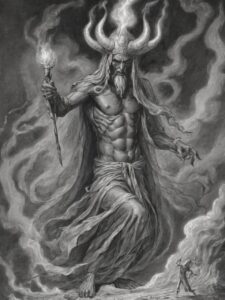
Islamic tradition mentions malevolent jinn or spirits that may assume forms akin to incubi, causing harm or mischief, and disturbing the sleep of individuals. In Islamic tradition, malevolent jinn (spirits) known as “Ifrit” or “Jann” engage in similar activities, often depicted as powerful and cunning entities.
Japanese Folklore:
Japanese folklore incorporates various yokai, supernatural creatures, some of which bear similarities to the incubus. Although not directly analogous, entities such as the “Yuki Onna” or “Rokurokubi” may be linked to nocturnal visitations or paranormal activities. In Japanese folklore, yokai encompass a range of supernatural creatures, some with seductive or malicious intentions. Examples like the “Yuki Onna” or the “Rokurokubi” may not be directly analogous to the incubus but share common themes of supernatural encounters.
Sumerian and Mesopotamian Mythology:
Ancient Sumerian and Mesopotamian texts refer to entities such as Lilu or Lilitu, sometimes considered precursors to the later European concept of incubi. These beings were associated with nighttime disturbances and malevolent activities.
Chinese Folklore:
Chinese folklore features stories of ghostly lovers or entities that visit individuals at night. While not explicitly incubi, these tales share thematic similarities with incubus legends in other cultures. Guiqubai: In Chinese folklore, there’s a similar entity known as “guiqubai,” which is a ghostly lover that visits women at night. The appearance may vary, but it is often described as a handsome and charming male figure.
Middle Eastern and Persian Folklore:
In Middle Eastern and Persian folklore, one notable supernatural entity associated with nocturnal visitations is the “Mara” or “Mareh.” The Mara is often depicted as a malevolent spirit or demon that visits individuals during the night, bringing nightmares and causing sleep disturbances. While the characteristics and names of such entities can vary across different cultures and tales, the themes of seduction and danger commonly persist. It’s important to note that specific names and details may differ among various folk traditions and regions within the Middle East and Persia.
Succubus:
The concept of succubi is not tethered to a specific mythology but rather constitutes a widespread motif found in various cultures and folklore around the world. Unlike some mythological entities rooted in specific cultural traditions, succubi represent more of a cross-cultural archetype. Across diverse mythologies and legends, stories abound of succubi, female demons seducing men in their sleep, taking different forms and manifestations.
Sumerian and Mesopotamian Mythology:
In ancient Sumerian and Mesopotamian mythology, Lilu and Lilitu, linked to sex and nighttime disruptions, roamed the night causing disturbances. People perceived Lilu as male and Lilitu as female. Their association with disruptions and nighttime activities suggests a connection to malevolent spirits or demons interfering in human affairs, especially during vulnerable moments like sleep. The details of their mythology vary, but the overarching theme highlights their influence at night.
Christian Demonology:
Heinrich Kramer and Jacob Sprenger wrote the treatise on witchcraft, known as the “Malleus Maleficarum,” in the late 15th century. Authorities utilized this work to identify and prosecute witches during the European witch trials. The book explores the concepts of demons, witches, and supernatural activities.It suggests demons, like incubi, could have sexual relations with humans, especially witches, in a pact with the devil. While specific Christian scriptures lack mention of incubi, Christian demonology draws from biblical interpretations, with varying details of demonic interactions with humans.
Literature and the Arts:
Incubi have been a recurring theme in literature and the arts. From medieval morality plays to Renaissance poetry, and even into modern fantasy literature, incubi and succubi are depicted in various forms. These literary and artistic representations often explore themes of temptation, morality, and the supernatural.
Sleep Paralysis Experiences:
Some modern interpretations of incubus encounters are related to the phenomenon of sleep paralysis. Sleep paralysis can cause vivid hallucinations and a feeling of pressure on the chest, leading to stories of nocturnal visitations by supernatural beings. While these experiences have a scientific explanation, they have contributed to contemporary folklore about incubi.
FAQ
Are incubi present in specific mythologies?
The concept of incubi is found in various mythologies worldwide, with notable mentions in European, Middle Eastern, and Asian folklore. Different cultures have their own interpretations of these nocturnal entities.
What is the counterpart to an incubus?
The counterpart to an incubus is a succubus, which is typically depicted as a female supernatural being seducing men during sleep.
Are incubi and succubi exclusive to a certain cultural or religious belief?
No, incubi and succubi are archetypal figures present in the folklore of multiple cultures and religions, making them more universally recognized rather than exclusive to a particular belief system.
What activities are attributed to incubi in mythology?
Incubi are often associated with engaging in sexual activities with sleeping individuals. They may also be linked to nocturnal disturbances, dreams, and, in some traditions, are believed to cause harm or mischief.
Do incubi have specific names in different cultures?
Yes, names for similar entities vary. For example, in Islamic traditions, malevolent jinn like "Ifrit" may be considered similar, while in ancient Sumerian and Mesopotamian mythology, entities like "Lilu" or "Lilitu" share similarities.
Are there real-world accounts of encounters with incubi?
Reports of encounters with incubi are generally regarded as folklore or symbolic narratives. In modern times, some interpretations of such encounters may be related to sleep paralysis experiences.
How are incubi portrayed in literature and the arts?
Incubi have been a recurring theme in literature, art, and cultural expressions throughout history. They often symbolize themes of temptation, morality, and the supernatural.
Can the phenomenon of sleep paralysis be associated with incubus encounters?
Some interpretations suggest that stories of nocturnal visitations by incubi are related to the phenomenon of sleep paralysis, where vivid hallucinations may occur during episodes of disrupted sleep.
What is the cultural significance of incubi stories?
Incubi stories often serve as cautionary tales, explanations for unusual occurrences, or reflections of societal fears and anxieties surrounding the mysterious and the supernatural.
